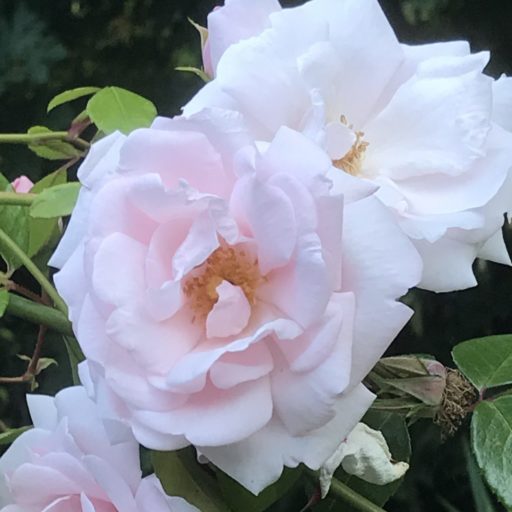This last week I have been thinking very carefully about the camera obscura we made last Friday and how it allowed even those of us who have some experience and knowledge about optics to engage in the process; to be able to observe things that formerly were “known” only through books and thought experiments. Rather like the connaitre and savoir of the French language, the process and engagement allowed deeper learning.
Side note: we are looking at a two-week (or thereabouts) length for this unit. I am going to assume 40 minutes’ work-time and ignore ideas such as set-up, clean-up and transition times, though I am aware those will need to be built into our science routines.
Back to the ideas. I was so excited, I took my camera home. I shared it with my kids, my husband, my parents. Would have shared it with my dog if I could, and with friends if any had been brave enough to visit. It has had me thinking all week long about light and vision — and, since I use magnifiers of various types, how do lenses work? I understand the physics of light, but I continue to find prisms and the magic of color fascinating. And that is what I want to set up for my own students in the unit I am planning, something that is so compelling and interesting that they continue to think about it and work on it in unexpected ways later on.
I want to provide my students with experiences that make them think about force and motion — and at the 4th/5th grade level more specifically measurement of force and motion — in similar ways. I have done some additional looking around on the internet and on my own bookshelves. I know that there are many resources both online and in libraries that can help me find materials, projects and ideas.
Here is a brief outline. Again, each “day” is 40 minutes long; if I have two hour-long blocks each week there would be some shuffling and condensing or an extension into the third week.
Day 1: playing with measurements: What can be used to measure what? (hands-on, journaling)
Day 2: What is force? What is motion? (hands-on, journaling)
Day 3: How do we communicate our ideas about science? (hands-on, books/video, journaling)
Day 4: History and science: who said what about force and motion, when? (books, video) How does it compare to our work this week? (journaling)
Day 5: Week summary — in pairs or small groups students will create posters or blogs or ?? about their own learning. Need to set this up and work on it a little bit each day; part of normal science routine is to document everything!
Week Two is about deepening the sophistication.
Day 6: Review — share what was learned last week, preview of next three days. Whole-group sharing.
Day 7: Math and science — communicating with symbols (introduce the idea that there may be formulas that can be used to job the memory). (hands-on — how?)
Day 8: What do we use to measure force and motion, how do we represent this? (hands-on, paper and pencil, journaling)
Day 9: A world of movement: When an irresistible force meets and immovable object? (books/video, hands-on, journaling).
Day 10: Wrap-up. What do we know and how do we know it? Blogging, whole-group presentation, or … ??
Extensions or things that we can trade out: force and motion in the real world. On earth, in space? How do I experience force and motion in my own life (self-to-content connection)?
Things to consider: vocabulary development, reading levels, writing levels, organizational support for creating posters and pages, behavioral or movement issues.
Quality Questions:
- Can there be “negative force?”
- “How can I measure the ‘size’ of something in a way that helps me understand the force used to move it?”
- “Is there a relationship between time and force? Motion? — What is the link between force and motion?”
